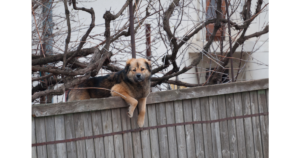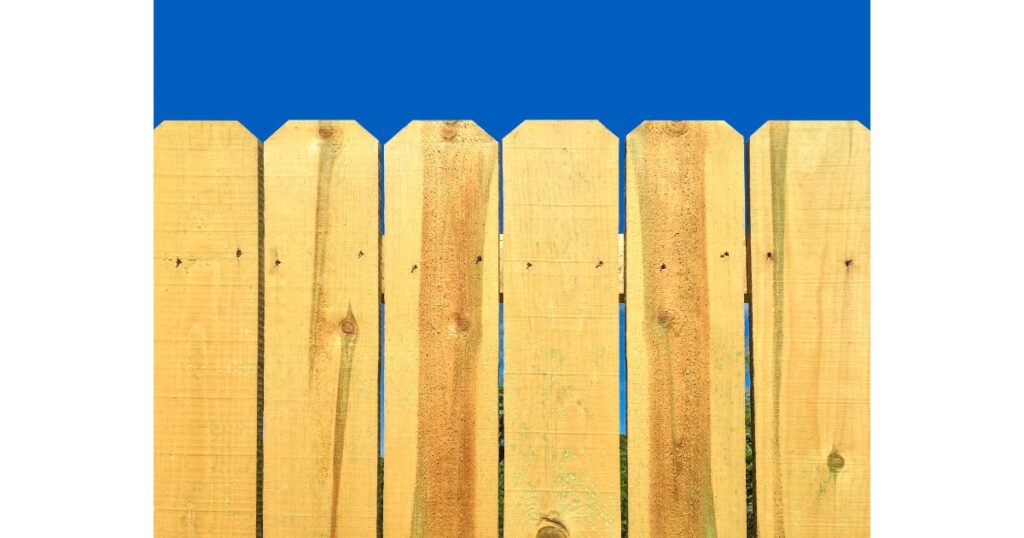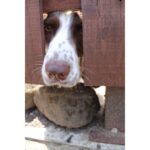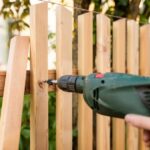Today i will take you on the adventure of a do it yourself dog fence. As a devoted pet lover, many of you think about crafting a dog fence by yourself for your furry friend. Some people might want to add some personal touch besides providing safety. Fencing is one of the best and most trusted ways to protect the dog, but if you want to save some bucks and want to have an adventure as well,. Then this article will be helpful to you.
Do It Yourself Dog Fence. Key Takeaways:
Table of Contents
Toggle1: Do it yourself dog fence is a good option for adventurous dog owners.
2: It is a cost-effective option with tailored fencing for your dog.
3: Inspect your soil and select durable material for this fence. Ensure to consider the breed, size, and nature of the dog before opting for DIY fencing. The rest of the necessary steps are provided in the article.

So Let’s start
Why choose a DIY dog fence?
DIY dog fences have gained popularity because of their affordability, flexibility, and ease of installation. Many pet owners prefer the DIY approach, as it allows them to customize the fence according to their needs and property layout. Besides, with a DIY dog fence, you can ensure that the materials used are of high quality, ensuring the safety and security of your beloved pet dog.
Before building your DIY dog fence, it’s crucial to assess your property and understand its boundaries. Grab a pen and paper and take a walk around your yard, marking the boundaries and any potential obstacles that may interfere with the fence installation.
Choosing the Right Fence Type
There are various types of dog fences available, and selecting the most suitable one for your needs is essential. Here are some common DIY dog fence options:
Wire Dog Fence Panels by Bits of Wood Workshop
For those seeking durability and a rustic charm, Bits of Wood Workshop will be ideal to make a fence. Wood panels always stand the test of time. Crafted with meticulous attention to detail, these panels not only keep your pet safe but also add a touch of elegance to your outdoor space. The sturdy wire construction ensures a reliable barrier while allowing an unobstructed view of your surroundings, making it an excellent choice for the discerning pet owner, who values both function and aesthetics.
No-digging DIY Dog Fence
Picture this: a DIY dog fence without the hassle of excavation. This type of fence allows you to create a secure enclosure for your canine companion without disrupting your pristine lawn. No more digging up the yard—just a seamless blend of safety and aesthetics. It’s perfect for renters or those with limited outdoor space, offering both convenience and peace of mind.
DIY Dog Fence Installation Steps
Step 1: Gather the Tools and Materials
Before you start the installation process, make sure you have all the required tools and materials. This may include fence panels, posts, concrete, screws, a level, a shovel, and a post-hole digger, depending on the fence you choose for dog fences.
Step 2: Mark the Fence Perimeter
Using stakes and a string, mark the fence’s perimeter according to your property assessment. Double-check the boundaries to ensure the accuracy of dog training.
Step 3: Install the Fence Posts
If you’re setting up a wooden or chain-link fence, dig holes for the posts along the marked perimeter. Place the posts securely in the holes and fill them with concrete to provide stability.
Step 4: Attach the Fence Panels
For wooden or chain-link fences, attach the fence panels to the installed posts using screws or clips. Ensure that the panels are level and evenly spaced.
Step 5: Setting Up a Wireless Electric Dog Fence
If you opt for a wireless electric dog fence, follow the manufacturer’s instructions for installing the transmitter and setting the boundaries. Introduce your dog to the fence slowly and patiently, using positive reinforcement during the training process of Dog Fence.
Training Your Dog to Respect the Fence
Regardless of the type of fence you choose, it’s crucial to train your dog to understand and respect the boundaries. Here are some essential training tips:
- Positive Reinforcement: Reward your dog with treats and praise when they stay within the designated area. This will help reinforce positive behavior.
- Consistent Training: Regular, consistent training sessions will help your dog comprehend the boundaries more effectively.
- Supervision: Initially, keep a close eye on your dog while they explore the new fence. This will help you intervene if they attempt to breach the boundaries.
- Avoid Punishment: Never punish your dog for crossing the boundaries. This can lead to confusion and anxiety, making the training process more challenging.
Maintaining Your DIY Dog Fence
Regular maintenance is essential to ensure the longevity and effectiveness of your DIY dog fence. Here are some maintenance tips:
- Inspect Regularly: Routinely inspect the fence for any damage, loose posts, or sagging panels. Address any issues promptly for dog fences.
- Repainting and staining: If you have a wooden fence, consider repainting or staining it every few years to protect it from weather elements.
- Check the Wireless System: For wireless electric dog fences, check the transmitter and collar batteries regularly to ensure they’re functioning correctly.
Conclusion
Congratulations! You have successfully installed a do-it-yourself dog fence to keep your furry friend safe and secure on your property. Remember, the key to successful DIY dog fence installation is careful planning, choosing the right fence type, and consistent training for your dog. By following the steps and tips outlined in this article, you’ve taken a significant step towards providing your canine companion with a safe and enjoyable environment with Dog Fence.
Now, enjoy the peace of mind that comes with knowing your four-legged family member is protected, happy, and free to explore their newfound space!

FAQ 1: What is a DIY dog fence?
Answer: A DIY dog fence is a type of pet containment system that allows dog owners to create a safe space for their big dog on their own, Best Dog Fence with no professional installation.
Can I use a DIY dog fence for multiple dogs?
Yes, a DIY dog fence can be used for multiple dogs. However, it’s crucial to ensure that each big dog is individually trained to respect the boundaries.
What type of DIY dog fence is best for small breeds?
For small breeds, a wireless electric dog fence or a traditional wooden fence with small gaps between the panels can be effective options for a dog fence.
What is the cheapest fencing option for dogs?
Chicken wire is often considered one of the cheapest fencing options for dogs. It’s cost-effective and can be used to create a simple and budget-friendly dog enclosure.
How to make a cheap temporary fence?
Creating a cheap temporary fence can be done using materials like PVC pipes and mesh fabric. Construct a frame with PVC pipes and attach the mesh to create a quick and affordable temporary barrier for your dog.
How can I keep my dog in the yard without a fence?
You can keep your dog in the yard without a fence by using alternative methods like a long leash or a tie-out system. Supervised outdoor time, training, and using pet-friendly deterrents can also help keep your dog within the yard.
What is the best material for a dog fence?
The best material for a dog fence depends on your preferences and the specific needs of your dog. Common materials include wood, wire, PVC, and metal. Each has its advantages, such as durability, visibility, and ease of installation.
Do dogs need a fence?
While not every dog requires a fence, it’s recommended for safety. A fence provides a secure area for dogs to play and exercise without the risk of running off. However, other methods like leash training or supervised outdoor time can also be effective, depending on your living situation and your dog’s behavior.







